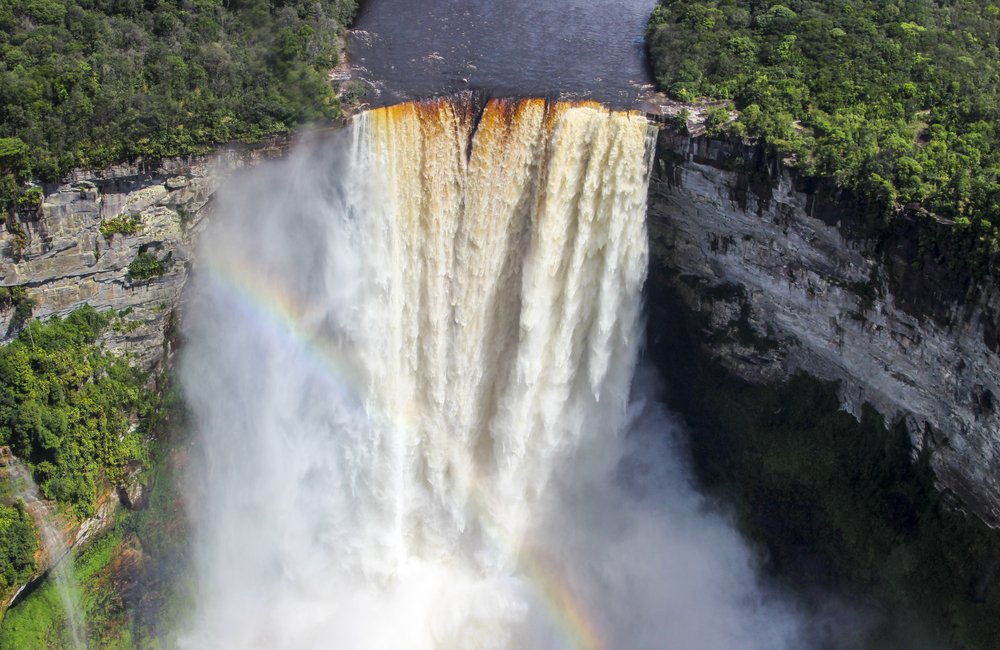Guyana, a hidden gem in South America, is home to 10 national parks that protect its extraordinary biodiversity and cultural heritage. With its pristine rainforests, savannahs, mountains, and rivers, Guyana offers a natural haven for wildlife and an untouched paradise for eco-tourism. These parks play a critical role in conserving the country’s ecosystems, supporting Indigenous communities, and providing opportunities for visitors to experience some of the most spectacular landscapes in the region. Among its protected areas, several national parks stand out for their ecological importance and visitor appeal.
Kaieteur National Park is the crown jewel of Guyana’s national parks. It is famous for the awe-inspiring Kaieteur Falls, one of the tallest single-drop waterfalls in the world, plunging 226 meters into a lush valley below. Surrounded by pristine rainforest, the park is a haven for rare species such as the golden rocket frog, Guianan cock-of-the-rock, and the endangered giant otter. The park’s remote location and relatively low visitor numbers ensure a tranquil and unspoiled experience, offering a glimpse into the untouched beauty of Guyana’s interior.
In the southern savannahs, Iwokrama National Park is a globally significant site for biodiversity and research. Spanning nearly a million hectares, this park protects part of the Guiana Shield, one of the oldest and most stable geological formations on Earth. It is home to jaguars, giant anteaters, harpy eagles, and over 500 bird species. Iwokrama is also a model for sustainable development, integrating Indigenous knowledge into conservation efforts. Visitors can explore its dense forests, climb Turtle Mountain for panoramic views, or embark on river tours to experience its incredible wildlife.
Kanuku Mountains National Park, located in Guyana’s southwestern region, is renowned for its stunning landscapes and exceptional biodiversity. This park contains both savannah and forest ecosystems, supporting a wide variety of species, including giant armadillos, red-and-green macaws, and black caimans. The Kanuku Mountains, meaning “forest” in the Wapishana language, are sacred to the Indigenous communities who live in harmony with the land. Visitors can explore its rugged terrain, pristine rivers, and rich cultural traditions.
Shell Beach National Park, along Guyana’s northern coast, protects critical habitats for endangered sea turtles, including the leatherback, green, hawksbill, and olive ridley species, which nest on its shores. This park also safeguards mangrove forests and rich coastal ecosystems that support countless bird species and marine life. Visitors can participate in turtle conservation efforts, explore its serene beaches, or observe its vibrant birdlife.
Rupununi National Park, part of the expansive Rupununi Savannah, offers breathtaking open landscapes, wetlands, and rivers that are teeming with life. This park is home to iconic species such as jaguars, capybaras, and the giant otter. It is a paradise for birdwatchers, with species like the jabiru stork and the scarlet ibis frequently spotted. The park also provides a window into the traditions of Indigenous peoples, whose sustainable practices help preserve this unique environment.
Despite its natural wealth, Guyana’s national parks face challenges such as illegal logging, mining, and climate change. However, community-driven conservation initiatives and the country’s commitment to sustainable tourism are helping protect these areas for future generations.










































































